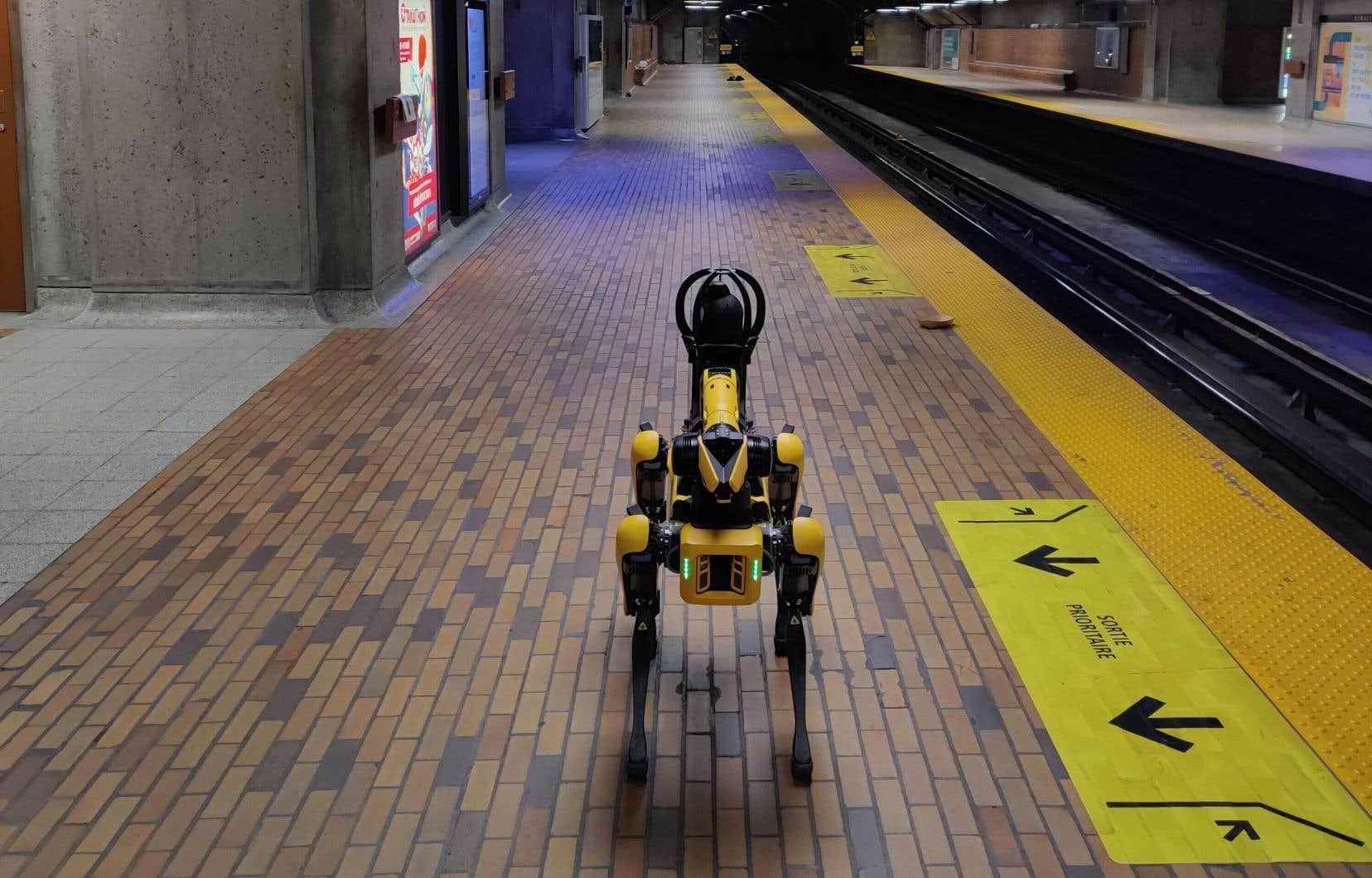Terminus. Spot, the Boston Dynamics robot dog, landed at Bonaventure station this summer. The automated and autonomous quadruped was enlisted by the Société de transport de Montréal (STM) to identify anomalies in metro stations. And to signal when he encountered a bone there, so to speak.
Between 1:00 a.m. and 4:00 a.m. for ten nights spread between May and September, after the stations closed, Spot surveyed the Quai Montmorency of the Bonaventure metro station in downtown Montreal. Every ten meters he took pictures of the station. In the background, these photos were combined to produce a 360 degree portrait of the station. A tailor-made software then identified the presence of undesirable items: burnt lights on the ceiling, graffiti on the walls, trash on the floor and other elements of the decor that should not be part of it.
To really put the dog-robot to the test, the STM itself left some trash lying around and sketched some fake tags on the walls of the station. The STM’s objective was to see if it would be possible to automate part of the monitoring and maintenance of its stations, so that its employees could get down to work more quickly when they arrive on site morning come.
Almost perfect
This project was made possible thanks to provincial financial assistance called Support for Innovation Projects. This program has helped the young Montreal startup Osedea, in a way the dog handler of this project, to cover half the costs of this technological showcase. Osedea, who lent “her” dog Spot to the STM, received $48,000 from this program.
Above all, Osedea was able through this exercise to develop a software platform that will allow it to use Spot with other partners elsewhere in the province. His robot dog is equipped with a camera and an articulated arm with gripper. This combination allows him to perform tasks that surveillance cameras could not perform.
“In an emergency, Spot could cut an electrical circuit,” says Robin Kurtz, the Osedea developer responsible for keeping Spot running smoothly. “Spot can also do readings other than visual, such as detecting a significant presence of CO2something useful for fire departments…”
However, this was not Spot’s role during his rounds at Bonaventure station, says Osedea. In fact, certain limitations of the robot, including its battery life, have affected its usefulness in the STM project. The robot dog could not open all the doors or operate the turnstiles, which would have allowed him to visit the entire station without human intervention.
Osedea estimates that Spot performed the equivalent of 83% of what a human would have done in his place. That’s not bad, but it’s not the productivity gain that makes robots truly appealing to businesses, private or public. Especially given the acquisition price of the robot, adds the president of Osedea, Martin Coulombe.
“If Spot cost four times less, it would make a big difference,” he says. Because inevitably, the lack of workers creates a demand for automated and robotic solutions, but not all organizations have the means to invest in technology. Adopting your own robot dog Spot costs, according to its manufacturer Boston Dynamics, around US$75,000 (CA$100,000).
A threat to risky trades
The leaders of Osedea still see cases where such a robot can, today, be worth its weight in gold. In fact, one could say that the first jobs threatened by the arrival of robots are precisely the most risky jobs.
“In situations where a human cannot perform tasks for reasons of security or difficulty of access, a robot can be practical, even profitable”, assures Martin Coulombe. “For example, a robot like Spot can survey areas of a factory where labor safety standards prohibit a worker from going. »
Spot also has a few advantages over a simple surveillance camera system. There are already 2000 cameras distributed throughout the Montreal metro. However, their use is governed by rules that discourage the integration of computer vision capable of identifying people or objects such as the one called AME and produced by Osedea as part of this pilot project in the metro.
For the STM, this test above all made it possible to start thinking about future applications where a robot like Spot would simplify the lives of its approximately 11,000 employees. Without citing specific cases, spokesman Philippe Déry told the Duty that a more in-depth inspection of the approximately 71 kilometers of tracks on which the metro rests could be entrusted to a robot-dog with a well-honed nose.
“If Spot can perform more dangerous tasks, while he is doing them, the human can do something else”, concludes Philippe Déry.
